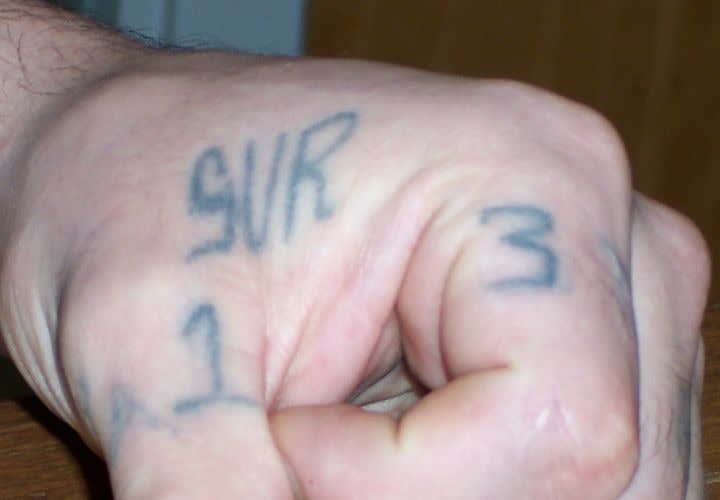Both the "hard-core" and "half-ass" gang member will boldly mark their new home with gang graffiti claiming their original Los Angeles Varrio such as "WF", "F-13", "XV3", and "MS-13." They might also write "So Cal," "213" or "310" (telephone prefix numbers), and sometimes the words "SUR 13," "South Side" or "Sureños."
The second type of Sureño is a gang member recruited and indoctrinated from your local community by the first type. Most of these "second-hand Sureños" have never been to Southern California.
Or they may also be a few ex-Southern California gang members from rival gangs who find themselves in a foreign environment, and therefore join together under the Sureño umbrella name to protect themselves. They may utilize local gang members to boost their numbers, calling themselves "Southsiders," "SS," "Sureno 13," "SX3" or some other reference to Southern California to tie them together.
The third kind of gang members calling themselves Sureños are the least connected to Southern California. They are Mexican Nationals, or natives of other Central American nations, who travel through the illegal immigration conduits controlled by the Sureño gangs. Street gangs such as Florence, 18th Street, and Mara Salvatrucha control major lines of human trafficking; they influence young men who utilize these routes and become indoctrinated in the Sureño gangster lifestyle.
When these men arrive in your community, they adopt the Sureño name and try to imitate the "American Hispanics" who helped bring them here. In reality, these Sureños have only a confused understanding of what it means to be a Sureño gangster. Untrained in American gang graffiti particulars, their "placasos" (plaques or badges in gang graffiti) are crude and less aesthetic than the U.S. gang placasos. Besides "Sur 13," these groups might mix in "Pandilla Sureño" (Sureño Gang), and "Sureños Mejicanos."












